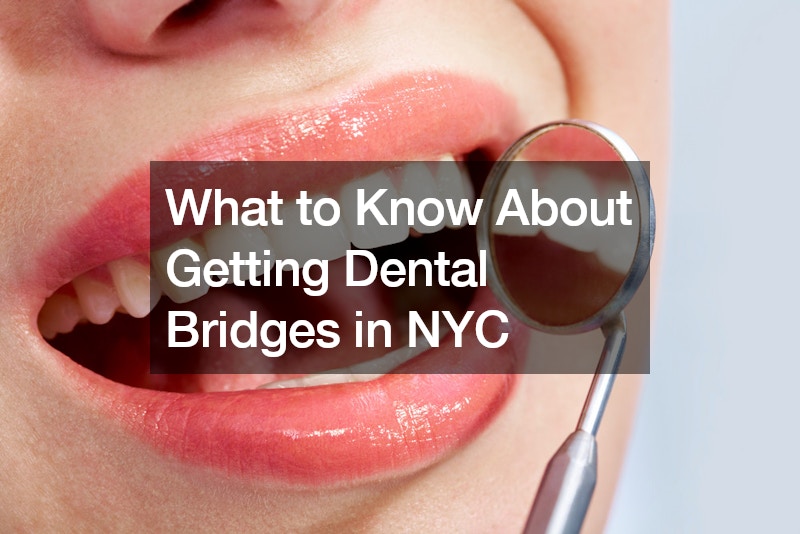
Dental bridges are a common solution for replacing missing teeth and restoring a beautiful, functional smile. If you’re considering dental bridges in NYC, it’s important to understand the process, benefits, and what to expect. This guide will provide you with the essential information you need to make an informed decision.
Understanding Dental Bridges
A dental bridge is a prosthetic device used to fill the gap created by one or more missing teeth. It consists of one or more artificial teeth, known as pontics, which are anchored in place by crowns attached to the adjacent natural teeth or dental implants.
Dental bridges can be made from various materials, including porcelain, ceramic, gold, or a combination of these.
Types of Dental Bridges
- Traditional Bridges: These are the most common type, consisting of a false tooth or teeth held in place by dental crowns on either side of the gap. Traditional bridges are typically made of porcelain fused to metal or ceramics.
- Cantilever Bridges: Used when there are adjacent teeth on only one side of the missing tooth or teeth. These are less common and are not recommended for the back of the mouth where they can put too much force on other teeth.
- Maryland Bridges: Also known as resin-bonded bridges, these are made of a metal framework with porcelain fused to metal or plastic teeth. They are bonded to your existing teeth using a metal or porcelain wing on each side of the bridge.
- Implant-Supported Bridges: These are similar to traditional bridges, but they are supported by dental implants instead of natural teeth. This type is typically used when more than one tooth is missing.
The Procedure
Getting dental bridges in NYC usually involves multiple visits to the dentist. Here’s a general overview of the process:
- Initial Consultation: Your dentist will evaluate your oral health, take X-rays, and discuss your options.
- Preparation: The abutment teeth (the teeth on either side of the gap) are prepared by removing a portion of enamel to make room for the crowns.
- Impression: An impression of your teeth is taken to create a model for the bridge, pontic, and crowns.
- Temporary Bridge: A temporary bridge is placed to protect the exposed teeth and gums while the permanent bridge is being made.
- Final Placement: Once the permanent bridge is ready, the temporary one is removed, and the new bridge is fitted, adjusted, and cemented into place.
Benefits of Dental Bridges

- Restored Smile: Bridges restore the appearance of your smile, giving you the confidence to show your teeth.
- Improved Functionality: They allow you to chew and speak properly, which might be difficult with missing teeth.
- Maintained Facial Structure: Dental bridges help maintain the shape of your face, preventing the sunken appearance that can occur with missing teeth.
- Preventing Tooth Movement: They keep your remaining teeth from shifting out of position, which can lead to other dental problems.
If you’re considering dental bridges in NYC, it’s essential to consult with a qualified dentist to discuss your options and determine the best solution for your dental needs.




